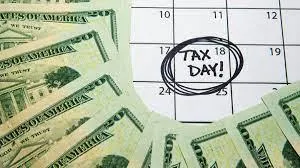AVL Media Blog


Read Our Newest Blogs

need more time to file your taxes
All individual tax filers, regardless of income, can electronically request an extension on Form 4868PDF by using the IRS Free File program partner software on IRS.gov. .
Introduction:
Tax season can be stressful, and sometimes, you may not be able to file your tax return by the deadline. But don't worry, you can file an extension to get more time to file your taxes. In this blog post, we'll discuss how to file an extension for your taxes.

With that said, here are 3reasons why you may need to file one. Some common reasons include: 👊
1.You need more time to gather all the necessary documents and information.
2. You experienced a life event, such as a natural disaster, that made it difficult to file your taxes.
3. You were out of the country during tax season.
Now that you understand why you might need to file a tax extension, let's look at the steps for doing so.
How to File for a Tax Extension: To file for a tax extension, you'll need to follow these steps
One of the most important aspects of starting a blog is establishing a connection with your potential customers. This can be done through engaging in conversation on your blog, posting stories about how you operate your business, or even sharing inspiring content that you think will resonate with them. These interactions also make it easier for you to keep up with what people are saying and sharing on social media.
1. Determine your filing deadline: The deadline to file a tax extension varies depending on your circumstances. For most taxpayers, the deadline to file an extension is April 15th. However, if you are a business owner or self-employed, the deadline may be different. Check the IRS website or consult with a tax professional to determine your deadline.
2. Submit Form 4868: To file for an extension, you'll need to submit Form 4868, which is the Application for Automatic Extension of Time to File U.S. Individual Income Tax Return. You can submit this form online using the IRS's Free File program, or you can print out the form and mail it to the IRS.
3. Pay any estimated taxes: If you owe taxes, you'll need to estimate the amount you owe and pay it by the original deadline. If you don't pay the estimated taxes by the original deadline, you may be subject to penalties and interest.
What to Expect After Filing for a Tax Extension: After you file for a tax extension, you'll have until October 15th to file your tax return. It's important to note that filing for an extension does not give you more time to pay any taxes owed. If you don't pay the estimated taxes by the original deadline, you may be subject to penalties and interest.
Tips for Avoiding the Need for a Tax Extension in the Future: Filing for a tax extension can be a hassle, so it's best to avoid the need for one in the future. Here are some tips to help you stay on top of your taxes:
1. Keep good records: Make sure you keep all your tax documents and records organized and in one place. This will make it easier to prepare your tax return.
2. Start early: Don't wait until the last minute to file your taxes. Start early and give yourself plenty of time to gather all the necessary documents and information.
3. Consult with a tax professional: If you're unsure about any aspect of your taxes, it's always a good idea to consult with a tax professional. They can help you understand your tax obligations and ensure you're filing your taxes correctly.
Conclusion: Filing for a tax extension can be a useful tool if you need more time to file your taxes. By following the steps outlined in this blog post, you can easily file for an extension and avoid any penalties or fees associated with late tax payments. Remember, if you have any questions or concerns about your taxes, consult with a tax professional.

© 2024 AVL Media - All Rights Reserved

